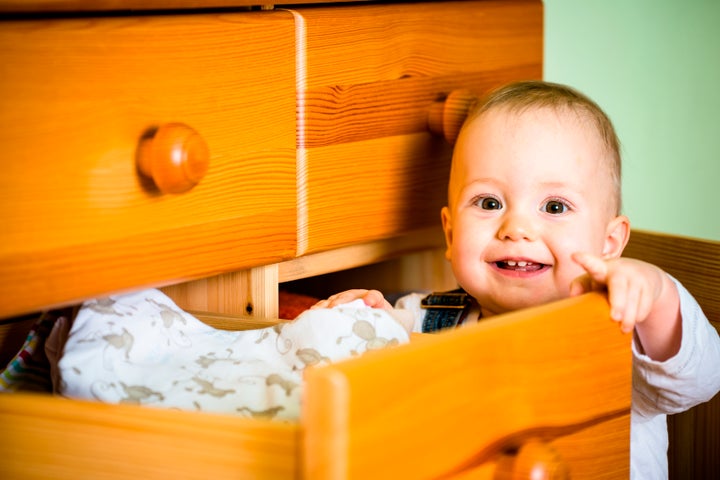
As an ER doctor, I’m often scared (and surprised!) by how many well-meaning parents overlook blatant safety risks in their home―often when they thought they were taking extra precautions. Parenting is tough, especially when items ostensibly marketed as “safety” end up being… well… not. The latest example is IKEA’s recall of baby gates and gate extensions, which comes shortly after two separate recalls for falling dressers from IKEA and Bernhardt.
You’re probably starting to question the safety of your home for your children – and you’re not being paranoid by doing so. In the U.S., six children die every day from an injury at home, and an additional 10,000 enter the ER every day. The risk is especially high for toddlers and young children.
As an ER doctor, I’ve taken care of many children, but as a mom, that statistic gives me a giant knot in my stomach.
When it comes to kids 12 and under, the most common causes of non-fatal injuries are falls, being struck by or against an object, cuts, burns and poisoning. Of those, the most deadly include suffocation, drowning and being struck by or against an object (like a bookshelf).
Of course, you can baby-wear your little cupcake until he’s 12―that would keep him safe. Or, you can save your shoulders (and side glances from strangers), and take these steps to protect your little ones at home. Sure, children always invent new ways to injure themselves, but if you take the right measures, you can reduce the risk of many injuries.
This blog will be the first in a series that’ll walk through your house, room-by-room, and help eliminate its biggest hazards. So, you’ll be able to sleep better at night―you know, the deep, pleasant sleep any parent of toddlers can enjoy…. oh wait… never mind. Well, at least home hazards won’t be keeping you up. In the first installment, we’re taking a look at the bedroom:
Hazards In Your Child’s Bedroom
Dressers & Bookshelves ― You’ve probably heard about the IKEA recall of 29 million dressers and chests due to the deaths of six children. But if you think that only IKEA furniture is at-risk, think again. Every brand is at-risk; Bernhardt issued a recall just a few days ago. In the U.S., a child dies every two weeks from furniture tipping over, and 42 percent of those fatalities occur in the bedroom.
Bumpers or Items in the Bed –- Those little crib bumpers are so cute and adorably complete the nursery’s look, right? I’m asking you to please, if you have a child under one, remove crib bumpers right now. In 2013, 819 children under the age of one suffocated or were strangulated in bed, most due to items like bumpers, toys, blankets and pillows.
How to Keep Your Child’s Bedroom Safe
If it’s taller than three feet, anchor dressers or bookshelves to the wall. If you think I’m being over-protective, watch this video. I get it—taking the extra step is a pain and you’re busy. But anchors are cheap—only $5 for a set on Amazon―and easy to install. The first time you catch little Jimmy using the dresser as a ladder? You’ll be glad you did it.
About 73 percent of parents admit to putting pillows, bumpers or toys in their child’s crib. Stop! If your kid is under the age of one, keep cribs clear of all objects and make sure baby is sleeping on his or her back.
What About Those Recalled Baby Gates?
Well, of course, if your gates have been recalled, return them. Otherwise, the only way to truly secure stairs is to mount baby gates to the wall. It’s a relatively easy DIY or consider hiring a handyman if you have to finagle around banisters. Pressure-mounted gates work for spaces between doors and other areas that aren’t as hazardous as stairs. Make sure your gates are at least 22 inches tall and that the slats are less than 3 inches apart. (I like gates with openings that are too small for a toddler to stick her little toe in and try to climb up!) For extra peace of mind, look for a sticker of the Juvenile Products Manufacturers Association, which means that the manufacturer claim that they’ve met voluntary safety standards.
What are your tricks for baby-proofing your house? What was the most surprising hazard you’ve found? Tweet me @DrDarria or comment on Facebook @Dr. Darria Long Gillespie, and follow us on twitter and facebook @SharecareInc!